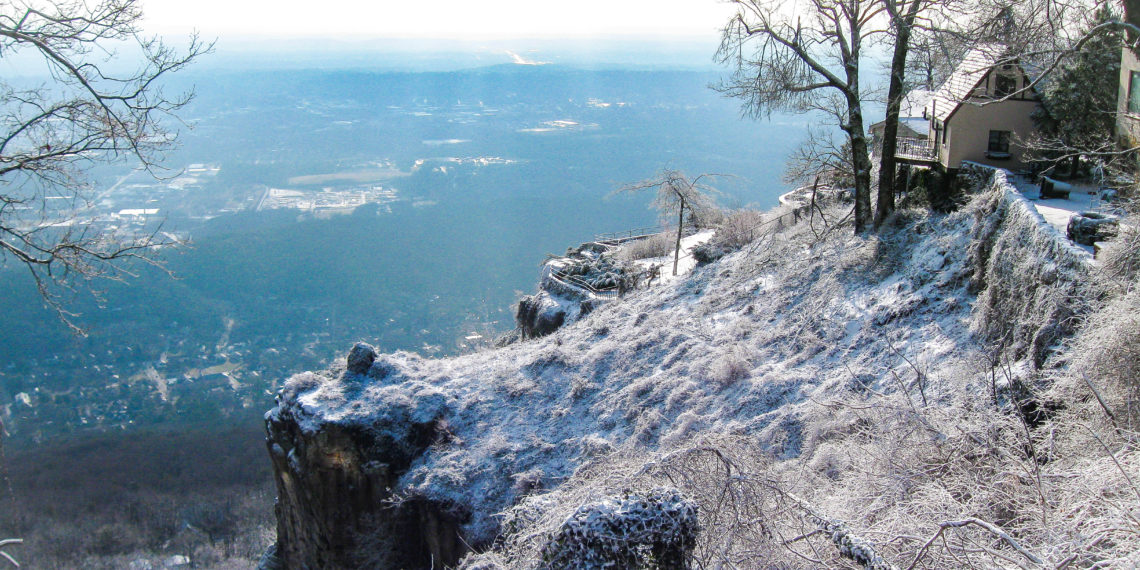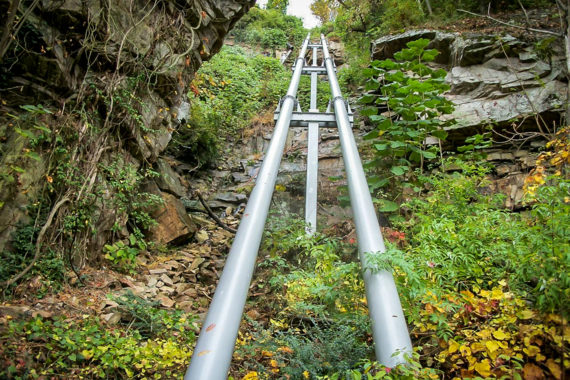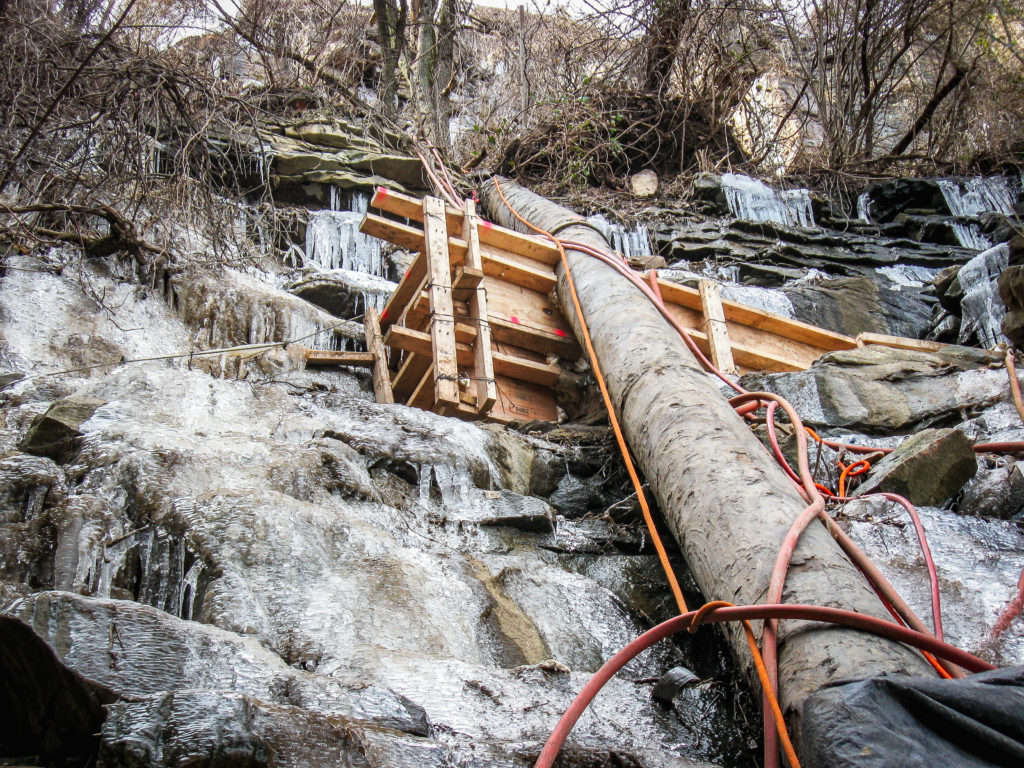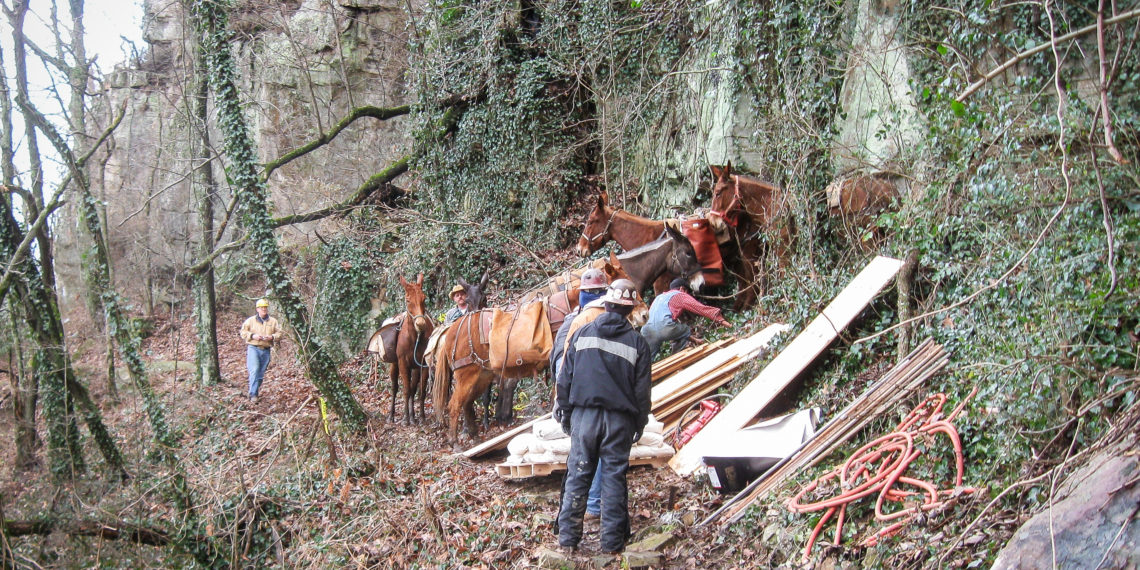
Lookout Mountain Waterline
When Tennessee American retained CTI Engineers to provide services for replacement of 1,000 feet of 60- to 90-year-old, leaking water lines on the Lookout Mountain bluff, it was clear that “typical” utility design and construction methods would not apply to this location.
The existing 8- to 10-inch cast iron lines, providing the sole source of public drinking water to the affluent Lookout Mountain area, were attached to a slope ranging from 110 percent to vertical.
The location of the project presented challenges not only because of its slope but because of restrictions related to its historic and economic value. The route passes through high-value residential property above the bluff and National Park Service (NPS) property below it. Obtaining easements and permits through these properties required extensive negotiations and commitments to minimize construction disturbance.
Because the lines were attached directly to the weathered face of the bluff, they had been damaged over the years by rockfalls. Underground installation for the entire replacement line would have protected the pipe but was infeasible due to cost and difficulty.
Instead, CTI’s structural engineers designed a 600-foot section of the project to be installed 10 to 22 feet aboveground, away from an overhanging rock ledge. Two parallel 12-inch steel pipes serve as structural elements of a “pipe bridge,” supported by concrete abutments at each end and steel structural tube at three intermediate points. Transverse footings were selected to resist wind and seismic load. The longitudinal support is the pipe itself.


The footings for the five support points presented a number of challenges:
- Footing locations were determined not by engineering formulas but by the location and condition of rocks on the bluff.
- Hand and power tools were used by workers suspended with rock climbing equipment.
- To haul materials for the footings, the contractor elected to use mules, which could reach the base of the construction site without damaging the NPS trails. Reportedly, the original lines serving the mountain, which were installed soon after the Civil War, also involved the use of mules hauling construction materials and laborers performing manual labor.
- While the footings were being formed, the 12-inch-diameter ductile iron portion of the project was installed underground in the steep slope and loose rock above the top of the bluff.
- Then a large crane was placed at the top of the mountain, and was used through the remainder of the project to “fly-in” concrete for the abutments; the steel tube supports; and lastly, the 12-inch steel pipes.
To prevent corrosion, the steel pipelines were coated with 20 mils of mill-applied fusion-bonded epoxy, followed by a mill-applied coating of 40 mils of abrasion-resistant epoxy-based polymer concrete. Field-welded joints were x-ray tested and coated with catalyzed liquid epoxy. Colors for the concrete and exposed pipes blend in with the natural colors of the bluff.
Conditions of the NPS permit required an existing NPS hiking trail to pass unimpeded over the water lines. Therefore CTI designed a wooden pedestrian bridge crossing the lower section of the pipe.
The design also included a plan to re-route local and tourist traffic to the Incline Railway and Point Park during the 5-month construction period.
With all its challenges, the project was completed within the project cost and time budgets, and should serve Lookout Mountain residents for decades to come.

